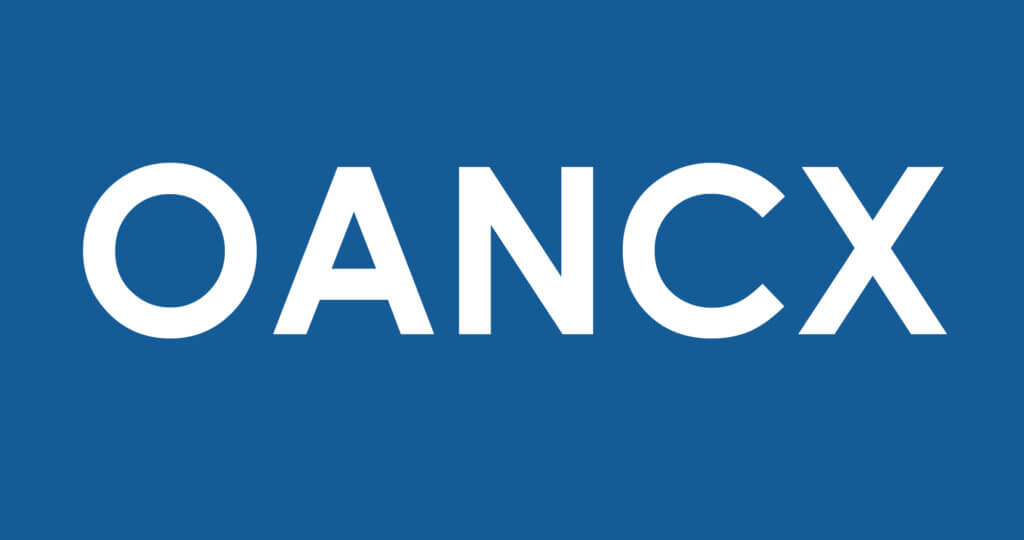Oakmark Bond Fund – Institutional Class
Average Annual Total Returns 03/31/24
Since Inception 06/10/20 0.28%
1-year 5.50%
3-month 0.38%
Gross Expense Ratio: 1.08%
Net Expense Ratio: 0.52%
Expense ratios are from the Fund’s most recent prospectus dated January 28, 2024; actual expenses may vary.
The Fund’s Adviser has contractually undertaken to waive and/or reimburse certain fees and expenses so that the total annual operating expenses of each class are limited to 0.74%, 0.54%, 0.52% and 0.44% of average net assets, respectively. Each of these undertakings lasts until 01/27/2025 and may only be modified by mutual agreement of the parties.
Past performance is no guarantee of future results. The performance data quoted represents past performance. Current performance may be lower or higher than the performance data quoted. The investment return and principal value vary so that an investor’s shares when redeemed may be worth more or less than the original cost. To obtain the most recent month-end performance data, view it here.
MARKET OUTLOOK POSITIONING
Performance
The Oakmark Bond Fund (“the Fund”) returned 0.38% in the first quarter, outperforming its benchmark, the Bloomberg U.S. Aggregate Bond Index, which returned -0.78% over the same period. Since its inception in June 2020, the Fund has returned an average of 0.28% per year, outperforming the benchmark’s return of -2.38% over the same period.
Approximately 90 basis points of the Fund’s outperformance this quarter was a result of prudent security selection as corporate credit and asset backed securities spreads tightened. The securities contributing most significantly to this quarter’s security selection were Ally Financial 4.7% Perpetual Preferred, BANK 2022-A4 Commercial Mortgage Pass Through due 3/15/2064, Freddie Mac Multifamily Structured Pass Through due 10/25/2036 (FHMS k1522 A2) and Capital One Financial 3.95% Perpetual Preferred Notes. Positions that weighed on performance during the quarter were Boeing Corp. 5% Sr. Unsecured Notes due 5/1/50, Fannie Mae 2% conventional RMBS due 11/1/2050 (FNMA4182), Fannie Mae 2.0% conventional 30yr RMBS due 2/1/2052 (FNCB2773) and Parsley Energy LLC 4.125% Sr. Unsecured Notes due 2/15/2028.
Allocation decisions contributed approximately 22 basis points to the Fund’s performance during the quarter as strong excess returns in both corporate credit and structured securities were captured by the Oakmark Bond Fund’s overweight in both asset classes versus the Bloomberg U.S. Aggregate Bond Index. These allocation decisions were the byproduct of strong, individual-security-level, risk-adjusted expected returns across spread product. The Fund maintains a higher proportion of corporate debt and securitized debt compared to the benchmark, at 48% versus 26% and 36% versus 28%, respectively. Although still overweight spread products, the Fund’s quality within credit and structured product is arguably the highest it has been since inception.
While security selection and allocation decisions were the main drivers of outperformance during the quarter, the Fund’s modestly shorter average duration relative to the benchmark also contributed to positive relative returns for the quarter compared to the benchmark. The Fund maintained its duration position of roughly 5.9 years throughout the quarter. This position is relatively neutral compared to the benchmark’s duration of approximately 6.2 years.
Positioning and Market Outlook
During the first quarter of 2024, yields shifted higher across the curve. The 2s10s yield curve, which measures the difference in interest rates between the 2-year and 10-year Treasury bonds, moved modestly flatter over the quarter as 2-year U.S. Treasury yield increased 35 basis points and the 10-year Treasury yield increased 32 basis points. Credit spreads continued to tighten over the quarter. Corporate spreads generically have tightened by 10 basis points since the end of 2023, led by lower rated quality buckets. Leveraged loans were the leading asset class within credit, benefitting from their floating rate nature (which protected them from the increase in interest rates), high current carry and strong inflows that drove technical demand. Securitized agency index spreads traded sideways in the quarter, as a decline in implied volatility and modestly increasing interest rates supported valuations and carry for high coupon mortgages. This was offset by the prospect of additional asset sales by banks, which pressured spreads for deals backed by lower coupon pools. In unguaranteed residential mortgage-backed securities and asset-backed securities, investment grade spreads tightened 30 to 50 basis points on continued improvements in investor confidence and attractive yield advantage over competing alternatives.
Our Fund maintains a preference for agency-backed securitized assets over U.S. Treasurys, and we are poised to continue the shift initiated over the previous 12 months in our government and government-backed securities portfolio, should we encounter wider spreads or heightened implied rate volatility. Even though the relative attractiveness of agency securities versus U.S. Treasurys has waned since the latter half of last year, our pivot toward agency paper still secures a beneficial balance of improved spread and yield without considerably affecting the volatility or liquidity of the broader portfolio. Our stance on the yield curve still leans toward the belly of the curve, endorsing the enduring value in the 5-, 7-, and 10-year maturities. We project the curve to revert to a more normal historical shape over the mid to long term, which will create a pronounced steepening of the 5-, 7- and 10-year U.S. Treasury maturities relative to the longer 20- and 30-year maturities. Always mindful of the risk posed by a potentially severe economic downturn that could significantly flatten or re-invert curve relationships in the short run, we are strategically cautious about maintaining our duration levels close to the index, given our view that nominal rates anchoring to the 10-year are within our fair value range. Our duration exposure goal is to be at the intersection of maximizing income, mitigating exposure to potential curve steepening, and fortifying against risks associated with our overweight positions in corporate and lower-quality segments. In the event of a notable curve steepening, we would likely reallocate toward the longer end of the curve to enhance the protection of our portfolio and simultaneously unlock capital to pursue opportunistic investments in individual corporate credits and non-guaranteed agency securities.
Within our credit portfolio, we continued to lower our exposure to corporate credit risk (albeit at a much more gradual pace), pivoting toward alternative asset classes that offer enticing potential, and we are gradually enhancing the quality of our remaining corporate exposures. As corporate credit spreads have continued to tighten since the start of the year, our shift has increasingly favored leveraged loans and non-guaranteed securitized assets, acknowledging their sustained appeal, although this is somewhat diminished compared to last year. Our investment strategy remains proactive in identifying potential in both high-yield and investment grade corporate sectors, albeit acknowledging that the endeavor to secure investments with an adequate safety margin has grown more demanding since the Fund’s inception in June 2020.
The market’s shift in perspective regarding rate cuts, shaped by definitive guidance from Federal Reserve Chair Jerome Powell and the persistent nature of inflation, has led to a recalibration of expectations. Acknowledging an economy that continues to demonstrate resilience, alongside the prospect of enduring inflation over 2.5%, has moderated default risks, propelled real interest rates upward and stabilized nominal rates. As the fixed income landscape progressively assimilates these factors, the focus is increasingly on the normalization of real rates to generate attractive income, produce robust total returns and provide a safeguard against potential future downturns. This strategic evolution underscores our preference for quality and extended duration in comparison to our position at the start of 2023.
Our strength continues to be credit selection, and we’re happy that for the third consecutive quarter it has been the standout driver of returns. We believe that the Oakmark Bond Fund’s core value proposition is that it offers a concentrated fixed income product in which returns are driven by asset class allocation and security selection and in which duration and curve decisions are not the focus, unless we are in an exceptionally abnormal rate environment. The term “concentrated” should not cause concern. We manage the Fund to be on the efficient frontier of diversification, defined by the point where additional positions do not reduce volatility or drawdown outcomes but would dilute our ability to generate idiosyncratic returns, or alpha, from credit selection. We believe this optimal level is between 75 to 125 positions. As we enter a new era of fixed income characterized by higher yields and reduced Fed influence, we expect the market’s focus to gradually return to individual security and asset class fundamentals, and we are excited to offer a vehicle designed to maximize our ability to capture value through understanding these fundamentals.
Connect with us
We value our relationship with our investors and strive to keep you informed through regular updates, but we also welcome any questions or concerns. Please don’t hesitate to reach out to our team: aabbas@harrisassoc.com or mhudson@harrisassoc.com.
The securities mentioned above comprise the following percentages of the Oakmark Bond Fund’s total net assets as of 03/31/2024: Ally Financial 4.700% Due 08-15-69 0.5%, BANK 2022-BNK40 A4 3.393% Due 03-15-64 1.4% ,Boeing CC 11/49 5.805% Due 05-01-50 0.6%, Capital One QC 09/26 3.950% Due 03-17-50 0.6%, FN MA4182 2.000% Due 11-01-50 2.6%, Fannie Mae 2.0% conventional 30yr RMBS due 2/1/2052 (FNCB2773) 0%, FHMS K1522 A2 2.361% Due 10-25-36 2.6% and Parsley Energy CC 2/23 144A 4.125% Due 02-15-28 0.9%. Portfolio holdings are subject to change without notice and are not intended as recommendations of individual stocks.
Access the full list of holdings for the Oakmark Bond Fund as of the most recent quarter-end.
The information, data, analyses, and opinions presented herein (including current investment themes, the portfolio managers’ research and investment process, and portfolio characteristics) are for informational purposes only and represent the investments and views of the portfolio managers and Harris Associates L.P. as of the date written and are subject to change and may change based on market and other conditions and without notice. This content is not a recommendation of or an offer to buy or sell a security and is not warranted to be correct, complete or accurate.
Certain comments herein are based on current expectations and are considered “forward-looking statements”. These forward looking statements reflect assumptions and analyses made by the portfolio managers and Harris Associates L.P. based on their experience and perception of historical trends, current conditions, expected future developments, and other factors they believe are relevant. Actual future results are subject to a number of investment and other risks and may prove to be different from expectations. Readers are cautioned not to place undue reliance on the forward-looking statements.
Yield is the annual rate of return of an investment paid in dividends or interest, expressed as a percentage. A snapshot of a fund’s interest and dividend income, yield is expressed as a percentage of a fund’s net asset value, is based on income earned over a certain time period and is annualized, or projected, for the coming year.
Duration is a measure of the sensitivity of the price of a bond or other debt instrument to a change in interest rates.
The Bloomberg U.S. Aggregate Bond Index is a broad-based benchmark that measures the investment grade, U.S. dollar-denominated, fixed-rate taxable bond market. The index includes Treasurys, government-related and corporate securities, mortgage-backed securities (agency fixed-rate and hybrid ARM pass-throughs), asset-backed securities and commercial mortgage-backed securities (agency and non-agency). This index is unmanaged and investors cannot invest directly in this index.
The Oakmark Bond Fund invests primarily in a diversified portfolio of bonds and other fixed-income securities. These include, but are not limited to, investment grade corporate bonds; U.S. or non-U.S.-government and government-related obligations (such as, U.S. Treasury securities); below investment-grade corporate bonds; agency mortgage backed-securities; commercial mortgage- and asset-backed securities; senior loans (such as, leveraged loans, bank loans, covenant lite loans, and/or floating rate loans); assignments; restricted securities (e.g., Rule 144A securities); and other fixed and floating rate instruments. The Fund may invest up to 20% of its assets in equity securities, such as common stocks and preferred stocks. The Fund may also hold cash or short-term debt securities from time to time and for temporary defensive purposes.
Under normal market conditions, the Fund invests at least 25% of its assets in investment-grade fixed-income securities and may invest up to 35% of its assets in below investment-grade fixed-income securities (commonly known as “high-yield” or “junk bonds”).
Fixed income risks include interest-rate and credit risk. Typically, when interest rates rise, there is a corresponding decline in bond values. Credit risk refers to the possibility that the bond issuer will not be able to make principal and interest payments.
Bond values fluctuate in price so the value of your investment can go down depending on market conditions.
All information provided is as of 03/31/2024 unless otherwise specified.







